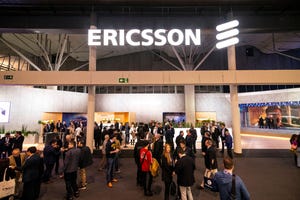FCC rules aim to smooth transition to 'NextGenTV'
The FCC has issued new rules designed to facilitate US broadcasters' transition to ATSC 3.0, a new, IP-based signaling standard that delivers 4K video, enhanced audio and advanced advertising.

The Federal Communications Commission (FCC) has moved forward with updated rules that aim to facilitate the transition to ATSC 3.0, a new, IP-based TV signaling standard that supports several service enhancements, including 4K and high-dynamic range video, immersive audio and advanced advertising.
The new Report and Order (PDF), released late last week, "seeks to facilitate and encourage partnerships that will minimize potential disruptions by permitting stations in a market to work together" to preserve ATSC 1.0-based programing (the legacy standard) during the transition, the FCC said. The ruling arrives after the National Association of Broadcaster asked the Commission to clarify elements of the transition related to simulcasting.
That decision, the FCC stressed, will aid the voluntary transition to ATSC 3.0, a standard that carries the "NextGenTV" consumer branding, while ensuring that over-the-air TV viewers can continue to access programming with their ATSC 1.0-based equipment, the Commission added.
This latest ruling comes about five years after the FCC authorized US broadcasters to use ATSC 3.0 on a voluntary, market-driven basis. With "very limited exceptions," broadcasters that make the voluntary move to ATSC 3.0 are required to air at least their primary streams using ATSC 1.0. Those broadcasters are also encouraged, but not required, to simulcast their ATSC 3.0 streams in an ATSC 3.1 format.
The 2017 rule held that a next-gen TV station's ATSC 1.0 simulcast channel be "substantially similar" to that of the video programming stream on the ATSC 3.0 channel. That requirement is set to expire on July 17, 2027, unless the FCC opts to extend it. The new order largely adopts that proposal, noting that the originating station (and not the host station) is responsible for regulatory compliance tied to a multicast streaming being aired on a host station.
The NAB applauded the FCC's decision. "NextGenTV holds the potential to offer tremendous benefits for viewers," NAB President and CEO Curtis LeGeyt said in a statement. "To unlock that potential, broadcasters are undergoing a complex and challenging transition. The steps the Commission has taken today – to facilitate the hosting of multicast programming and provide an end date to a rule mandating identical ATSC 1.0 and 3.0 broadcasts – will help make that transition possible."
The updated rules also arrive a couple of months after the FCC and NAB kicked off a public-private initiative focused on completing the transition to ATSC 3.0. The broad aim of that "Future of TV" initiative is to set a goal to identify a roadmap to transition to ATSC-based services in a way that is consumer-friendly.
That partnership emerged after the NAB warned that the ATSC 3.0 transition was "in peril" in the absence of more action from the FCC.
And all of this is coming about as a potential different, possibly complementary path is being explored for the delivery of IP connectivity over the TV airwaves. WWOO-LD, a Boston-based low-power TV station, has applied for an experimental license with the FCC to broadcast 5G signals. A key aim there is to deliver that capability to smartphones, tablets, TVs and other devices using the global 5G standard rather than focusing on the more regionally-tied ATSC 3.0 standard.
Related posts:
— Jeff Baumgartner, Senior Editor, Light Reading
About the Author(s)
You May Also Like












